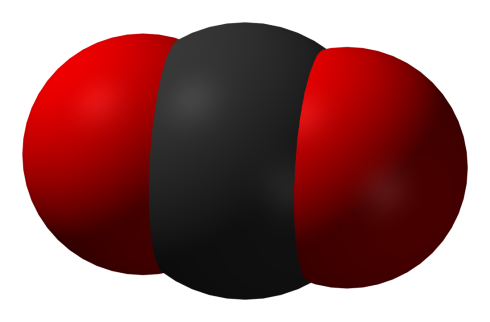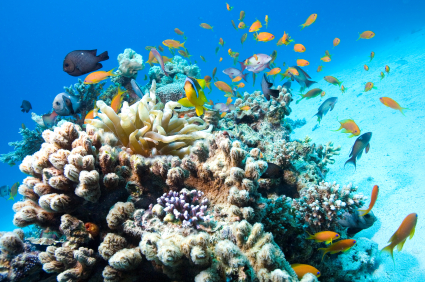
Carbon dioxide (via Wikipedia by JacekFH) carbon atom in the middle flanked by two oxygen atoms
This small molecule is too big for a single post, so I’ll probably revisit it at different points in this blog. It’s the most oxidized form of carbon, often thought of as waste product: both of fossil fuel burning and of the energy reactions that fuel life. But it’s also an essential component of photosynthesis to generate food and natural fuel sources.
But today I’m thinking about one of the many environmental impacts of rising atmospheric levels of carbon dioxide: the acidification of the oceans.
Changing the acidity of the oceans alters a delicate balance. Science suggests that this growing acidity may be dissolving carbonate in corals and releasing metal ions that would normally be wrapped up in carbonate minerals. (See this article in Chemical & Engineering News about the disrupted chemical balance).
The ocean has always been a giant sink for carbon dioxide, water absorbs it forming carbonic acid. Cooler water absorbs more carbon dioxide, but higher concentrations in the atmosphere are the primary force in pushing more of the gas to dissolve into the water, turning the ocean more seltzer-like (in terms of pH, not fizz).

coral reef in Red Sea, copyright iStockphoto/wierdeau
The effects, however, are not always what one might expect. In looking at fish earbones, called otoliths, researchers reported in Science that higher carbon dioxide levels actually made these structures larger rather than smaller. (Cornelia Dean of the New York Times wrote about it on Andy Revkin’s Dot Earth blog).
Otoliths are the tree rings of fish life-cycles. What does this mean for the fish? Not necessarily good– changes in ear bones could mangle their navigations skills.
Of course all of this science sits around the edge of the passage of the American Clean Energy and Security Act (ACES) by the House of Representatives this week. There will be plenty of opportunities to talk more about carbon dioxide. . . . stay tuned.

 Subscribe to RSS Feed
Subscribe to RSS Feed

2 Responses to “Molecule of the Week: Carbon dioxide (part 1 of many)”